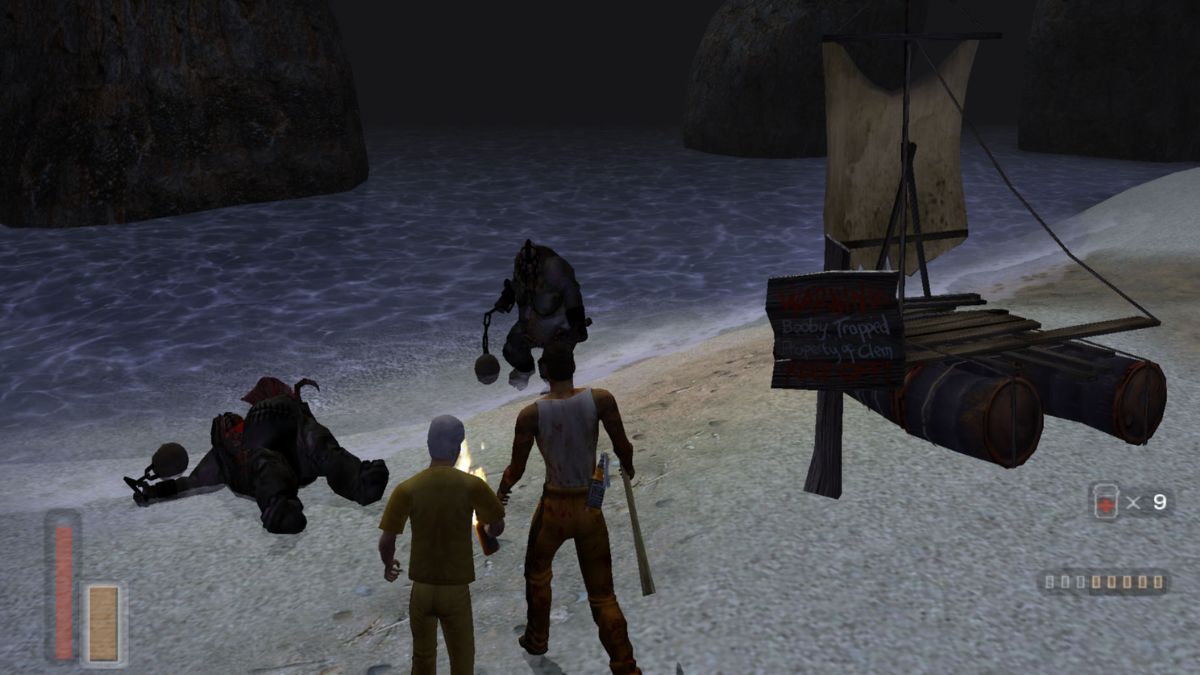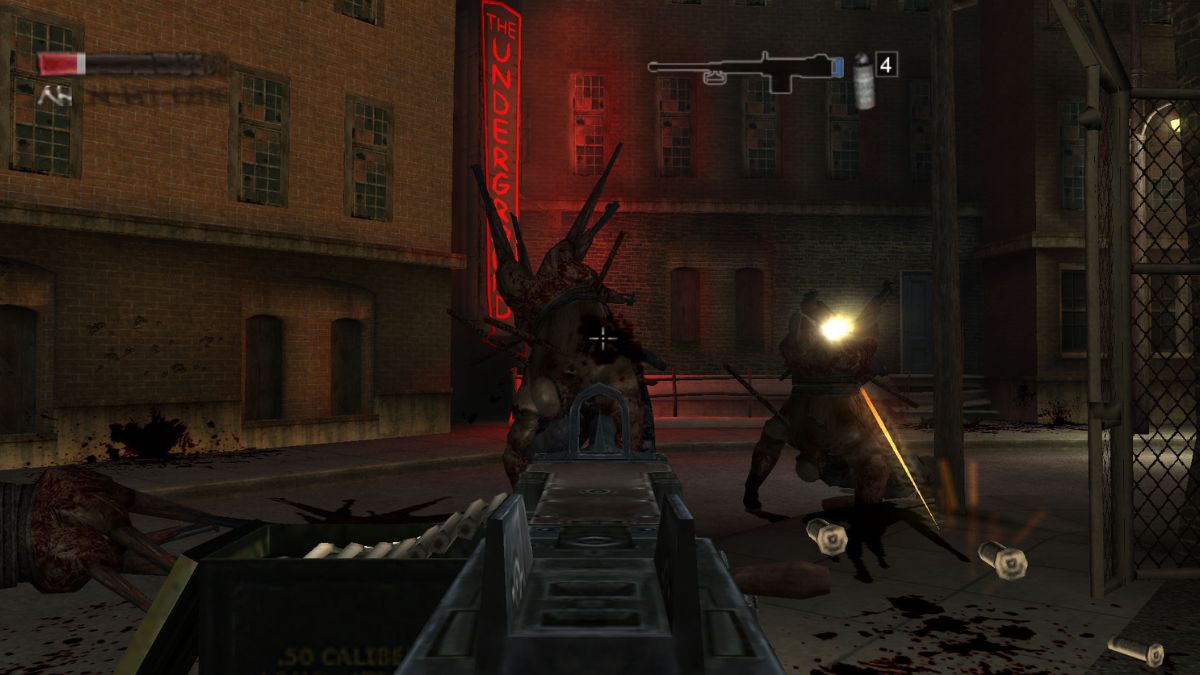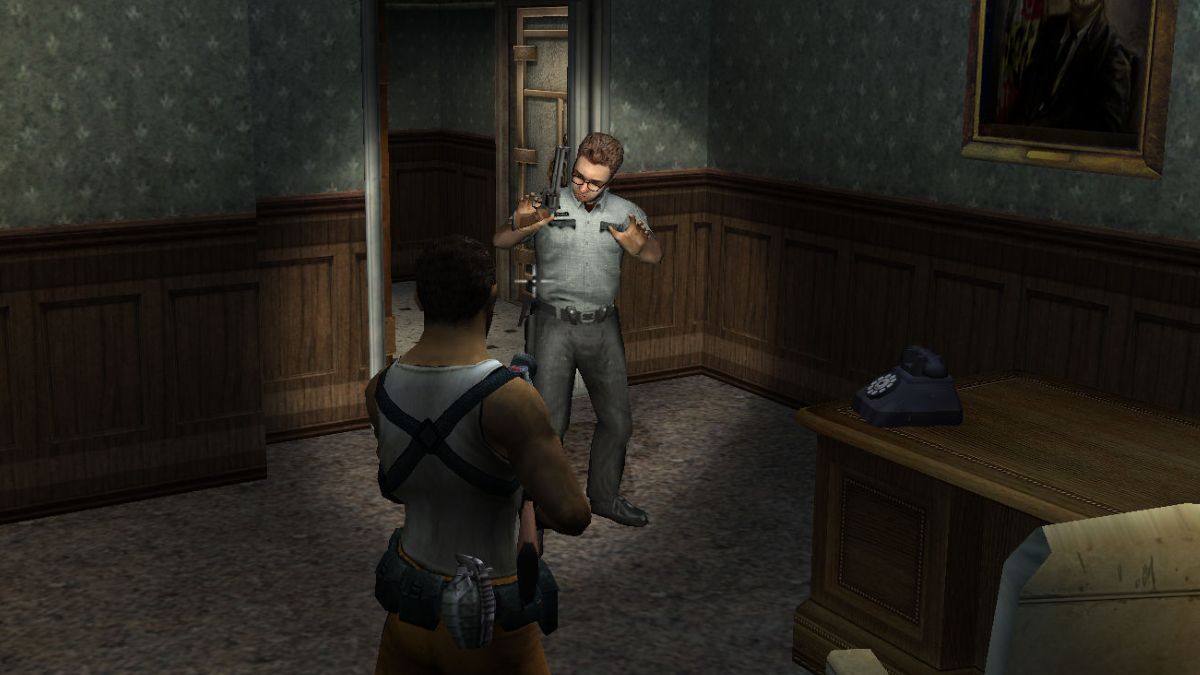When The Suffering, developed by Midway Games, was initially released in 2004, nobody was ready for it. The game is spooky and gruesome and doesn’t hold back when it comes to putting you up against some of the deepest, darkest, and most depraved humans you could imagine at the time.
Both The Suffering and its sequel, The Suffering: Ties That Bind, have been available on GOG for anyone to play for years now. However, the platform recently announced that they would be delisted from the store as of September 1, 2024, at the publisher’s request. If you haven’t played either of these brilliant retro horror/action games, I can’t recommend them enough because they’re a window into what felt like a big moment for games in 2004.
Games have gotten darker in recent years, but this title was a memorable release for many because it doesn’t hold back or hide things from you. It’s set in a prison where the protagonist, Torque, is waiting on Death Row. However, after an earthquake hits the prison, supernatural creatures begin wandering the halls and killing the guards and prisoners. Torque must fight his way out, all the while trying to understand what happened to his wife and child, how he ended up in prison, and who he really is.
As dark as it got
You have to remember that 2004 was the same year we got Halo 2, The Sims 2, and Doom 3. What The Suffering brought to the table was what felt like tangible horror. Imagine finding yourself in prison on Death Row, no less, without a clue what crimes you’re accused of.
Suddenly, there’s an earthquake, and all the lights go out. You see a guard get brutally murdered and dragged off by a hulking great monster of a man, but it’s too dark to make out any features. You’re left to walk the halls as quietly as you can, using only a shank as your defense, and hope no one finds you.
I vividly remember playing the game at launch and feeling utter terror right up until you faced your first supernatural enemies. You’ll have to attack guards and other prisoners, too, but the supernatural enemies dull the horror somewhat because they take away from how realistic the setting feels.
Over the course of the story, you’ll face actual monsters who haunt the prison. Their executions have twisted them, with the lethal injection creating a light-footed mutant with needles for arms and legs, slave traders who left their cargo to be eaten by rats are now filled with maggots and brandishing huge chains, and many others, making them terrifying to behold and just as scary to fight.

Even the moments when you can help other sane people, both prisoners and guards, aren’t free from the discomfort and unease that’s always lurking in the background with this game. You’ll have to choose how to help them and make other decisions that directly impact the game’s endings. There are three you could get, with each one showing something different happening to Torque’s family.
It’s an interesting morality system that requires you to play through the game a few times to see everything and shows the shattered nature of Torque’s mind. It’s more than his mind that’s broken, though, since Torque is able to transform into a raging, blade-wielding monster who rips everything and everyone around him apart.
I’ll admit, the transformation element of the game felt a little jarring to me at the time, but it does work because it shows how Torque isn’t immune to the supernatural things happening around him. He’s clearly a monster, but it’s up to you to decide how much of a monster he really is.
Continuity is key

The Suffering: Ties That Bind takes things up a notch when it comes to the action side of the series. I don’t think it’s as good as the first game, but it still has some genuinely brilliant moments and is a fantastic example of retro horror.
A really nice touch with this game is that your save file from the original impacts the opening. This was a rarity back in the day, and I feel like it’s still quite rare now, given that most games are expanded upon with DLC to fill out story arcs.
Instead of the confines of a prison island, you’re exploring Baltimore. The enemies in this game represent crimes and the underbelly of the city as opposed to execution methods, which broadens the scope of the series even though it ended here.
While these games aren’t Silent Hill or Resident Evil, they’re heavily inspired by those survival horror progenitors. They ooze atmosphere, and while the action does dilute the scares somewhat, there’s a lot to enjoy in these titles if you adore retro horror games.
Do yourself a favor, and don’t sit on these. They’re not hugely expensive to get on PS2 if you have the hardware to run them, but these PC copies from GOG are ones you can keep and run indefinitely. If there’s even a chance you might play them in the future, add them to your library before they’re gone because you’ll only regret it if you don’t.
As for what the delisting of The Suffering and The Suffering: Ties That Bind means, your guess is as good as mine. Usually, a delisting like this is linked to music licensing or another license expiry, meaning the game must be taken down. GOG does great work in bringing old games like these to PC, as it did with the original Resident Evil trilogy. But GOG is just one company amid a sea of games that get delisted each year, and the easiest way to ensure these titles are kept alive is by having as many people owning them right now as possible.


